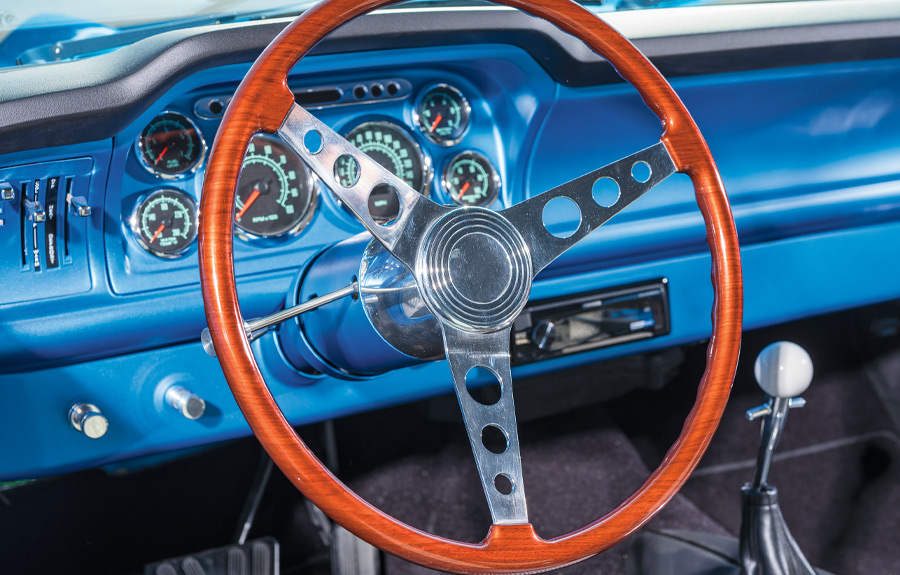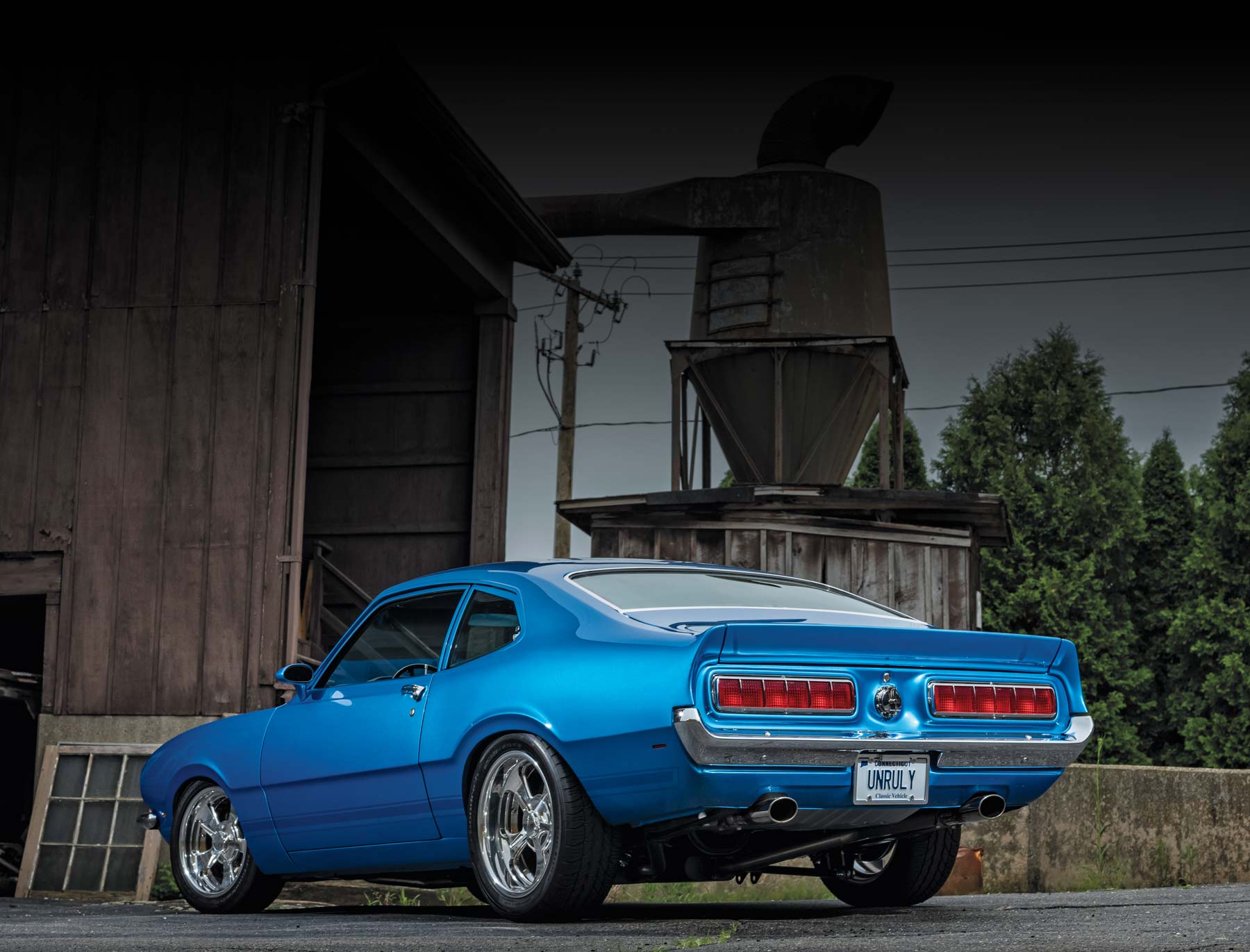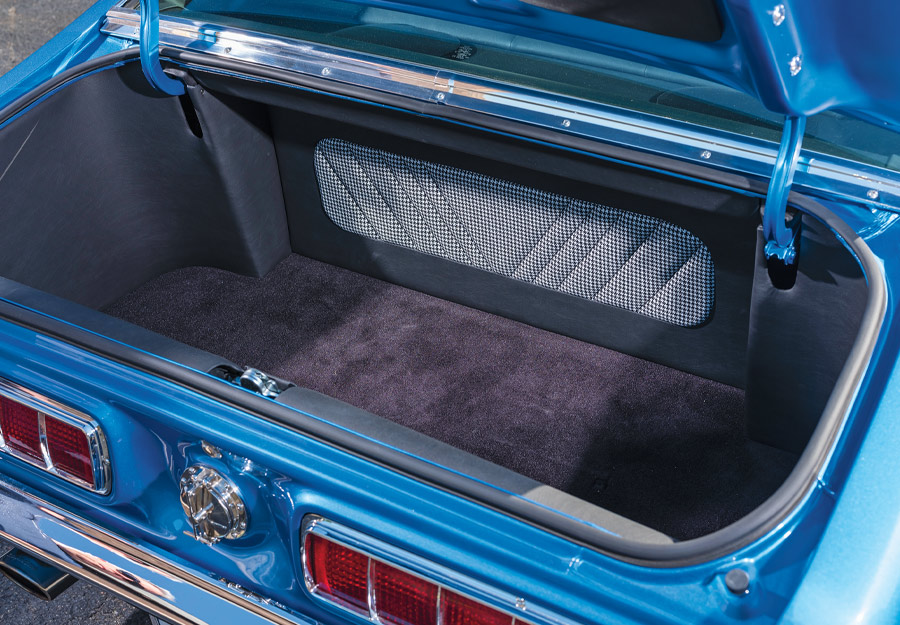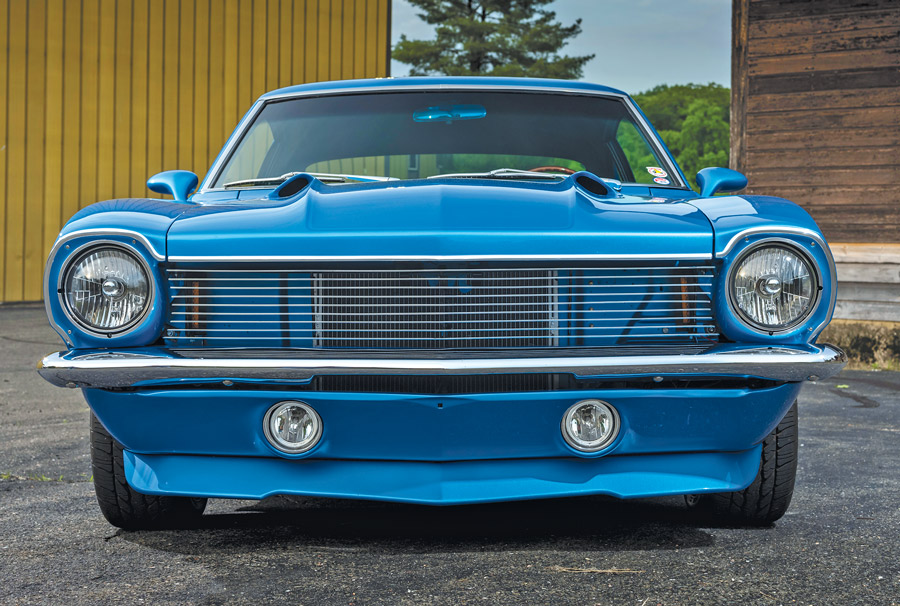
1972 Ford is at Home in any Crowd

hat first grabbed our attention about this 1972 Ford Maverick was the “electric” blue paint. There’s no missing this hot rod when making the rounds at any car show or rod run. Glenn Sinon of West Suffield, Connecticut, began this project with the idea that it would be a “low-dollar” driver for Hannah, his teenage daughter. We are guessing Glenn will back us up when we say that he “overshot the runway” on this landing.

As you go over the photos you will see a first-rate build that was an “at-home” project—all 2,000 hours! The original plan called for a $5,000 budget, a recycled engine and trans, and a quickie paintjob. All this so that his then 5-year-old daughter would have a cool first car when the time came.


Now comes the “look.” He sprayed on a rocker stripe that starts on the front valance and extends back to the quarter-panels. He says, “… in what’s reminiscent of a Shelby G.T. 350 stripe, but it has my take on it.” From here Glenn sprayed the engine compartment and interior pieces in body color and then covered it with D8115 matte clear. It should also be noted that all of the hardware is either ARP Grade 8 or polished stainless throughout the car while the brightwork was handled by Advanced Plating.

Glenn will tell you that he’s a bodyman by trade and he wanted to refine but not remove the original car that Ford had designed. He didn’t want to overdo it but he did want to give the car an updated look. In 1972 Maverick introduced the Grabber trim package, which included larger tire fitment, graphics, a spoiler, and a special dual-dome hood. And that brings us to the Grabber hood on our 1972. It’s a carbon-fiber Ford Grabber-style reproduction hood made by the Maverick Man Carbon. They also received the nod for the decklid that features an extended and integrated spoiler. While all this is going on don’t miss out on the Ring Brothers door handles, adding one more subtle and unique touch to a hot rod that’s filled with “unique touches.”


Next up the stock glass, showing its age, was removed and, fortunately for Glenn, he found new tinted N.O.S. glass to replace the tired and worn glass. From here he removed the rain gutters while extending the reveal down the A-pillar and also around the quarter glass where it then fades away as it wraps around. Next up he molded in the rear valance and added a lower bead line to give it some definition. Moving to the stock tail panel he cut it out and grafted in a replacement steel unit from Dynacorn that uses 1968 Shelby taillights. The fuel filler is a stainless steel component from Johnson’s Hot Rod Shop.
Glenn considers himself a “minimalist” and as such he wanted a minimal number of wires running through the engine compartment and those present to run through a billet port behind the engine. The Edelbrock Air-Gap intake manifold also provides a “natural” area for wires and while using the natural surroundings the wiring to the front of the car was run under the fenderwell hidden out of site. The heater hoses run to their ports over the Prior Brothers Fabrication bead rolled custom-made fender aprons prepared from patterns supplied by Glenn. He also bent the closeout panels up front that cover between the grille and the radiator support.
Turns out the suspension and powertrain were also more “overshooting the runway” projects but Glenn tells it so well in his words we just had to put them into print:


“With the suspension figured out it was time for a drivetrain. I reached out to my friend Rich Pierce who had a Mustang GT that had a great-running HO 302 and an AOD transmission. It had been taken care of with only the cylinders needing to be honed and the crank turned. Having never built an engine, I wanted to learn. With Rich standing by and guiding me I put the engine together. We stayed with the stock HO pistons, installed a Ford Motorsport E cam, an Edelbrock RPM Air-Gap intake along with an Edelbrock AVS 650 carb, and a PowerMaster alternator. I picked up a serpentine belt kit from March Performance. The ignition system is where I got stuck. The one big drawback to me was the nest of plug wires on the front of a Ford engine. I found Compu-Tronix and their distributorless ignition system. It uses two cables that run from the intake to a pair of coil packs that are paint matched and mounted on the firewall. Spark plug wires run from them to their individual spark plugs. I was beyond thrilled when the very first engine I ever built ran on the dyno and produced 340 hp with 365 lb-ft of torque. From the engine, power goes through that AOD that was perfectly rebuilt by friend Loyd Wig at Master Tech Automotive while an aluminum Ford Motorsports driveshaft connects that to the rearend.”

Next up the dash required some gentle massaging that Glenn performed by removing unused holes and then moving the headlight, wiper, and ignition switch to a lower dash panel that also serves as home for the stereo. The end result was a much-cleaner dash housing the New Vintage 69 Series of gauges all wired together by a EZ Wiring system. Steering chores are handed by an ididit tilt column that’s topped with a woodgrain pattern, Juliano’s Hot Rod Parts billet three-spoke wheel. From here Nu-Relics power windows are added while the Ford script logo is stamped into the door metal just above the panels.
Many may believe the Maverick wasn’t as popular as the Mustang, and while that’s true based on sales numbers, the reality is 579,000 Mavericks were produced in the first year, nearly catching the record-setting Mustang with its sales at nearly 619,000.
This Venom Blue Maverick is no slouch when it comes to knocking down the awards, having taken First in Class and Best Paint at the Detroit Autorama, a pair of Goodguys Builders’ Choice Awards, and many First in Class and Best in Show awards through its lifetime.
